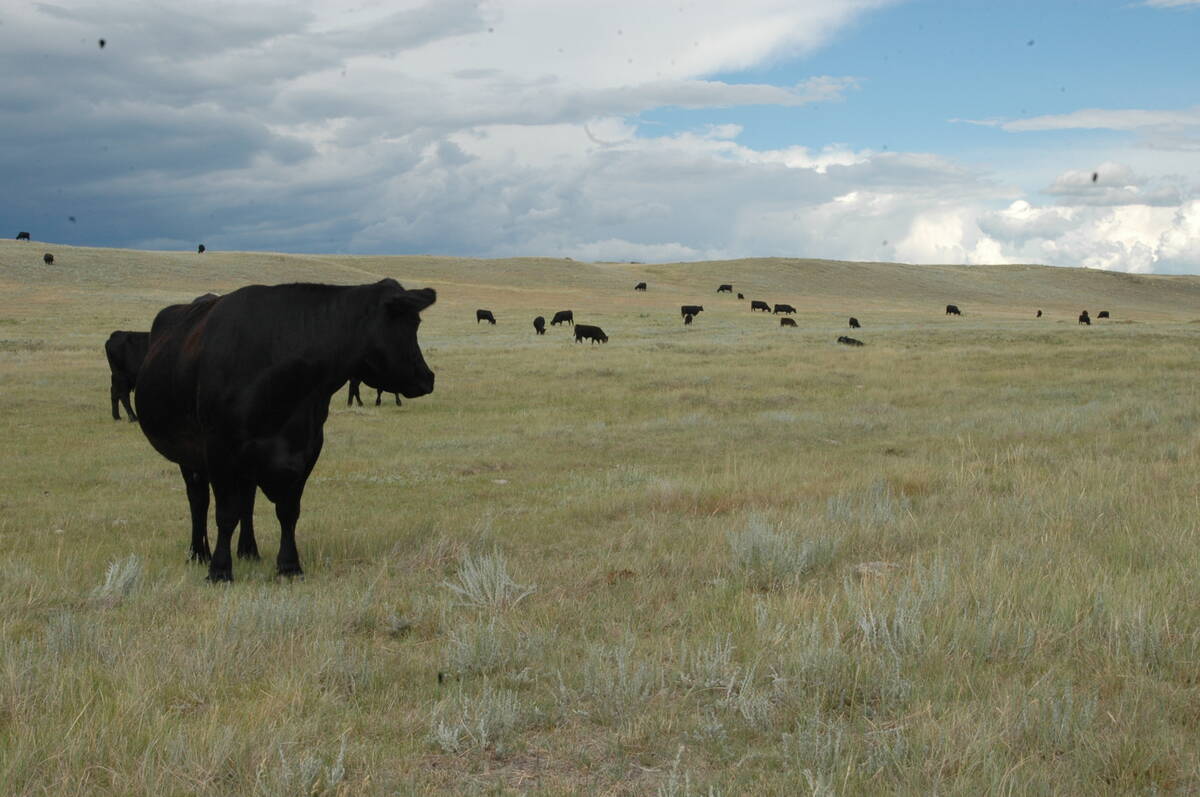Calvin Knoss still has 600 acres of swathed hay lying in the field.
Recent rain across the Prairies likely means it will not get baled any time soon, or without a struggle.
Knoss estimates his ranch near Rockglen, Sask., received about double its normal 200 to 250 millimetres this year, dragging out the haying season for months.
“It’s been slow,” said Knoss, who started haying at the end of June.
The quality ranges from “excellent to extremely poor.” The hay put up earlier in the season tends to be higher quality than hay made later. Some of it sat in the swath for a month.
Read Also

Saskatchewan Cattle Association struggles with lower marketings
This year’s change in the provincial checkoff has allowed the Saskatchewan Cattle Association to breathe a little easier when it comes to finances.
But what it lacks in quality, it made up in quantity.
“The quantity we’re getting is exceptional.”
Knoss estimated he has baled two to three times what he would in a normal hay crop, and the pastures and hay land have never looked greener or the cows healthier.
“The cattle are in good shape. We’re not forced to feed because of short pasture.”
When Knoss finally puts away the baler, he’ll get all the hay tested and build a feed ration around it, mixing in good, average and poor quality hay and holding the rest for reserve next year.
Despite the difficult haying conditions, Knoss estimates he has the same amount of good quality hay as in previous years.
The record amounts of rainfall have made haying a chore across the Prairies.
In Saskatchewan, large parts of the province have received 150 to 200 percent of average rainfall, with some areas exceeding 200 percent of average.
Hay must be dried to 15 percent moisture to store properly. This year a lot of hay was baled at 18 percent or higher, and mould and heat damage will likely occur.
Saskatchewan Forage Council executive director Janice Bruynooghe estimates about half the hay in Saskatchewan is good, about 10 percent excellent and the rest fair to poor.
“We’ve got 40 to 50 percent below what I call good quality feed.”
She said the poor quality hay borders on being usable.
For cattle producers who have put up hay, or those buying hay, the real test will come in two months when the bales are opened and the true quality is revealed.
Bruynooghe said livestock producers baling or buying hay should spend the extra $40 to $50 to test for quality and not rely on exterior appearance.
“We’re still going to be in a good feed supply. The message is mostly be careful of their feeding situation. If it’s poor quality hay, handle it accordingly.”














